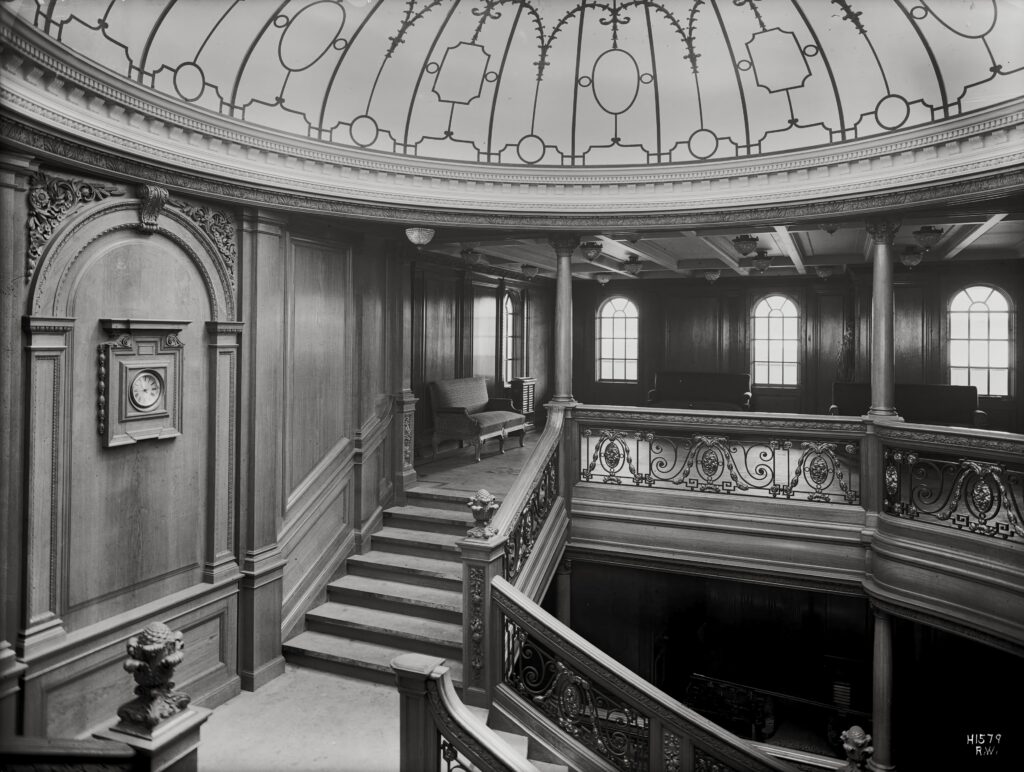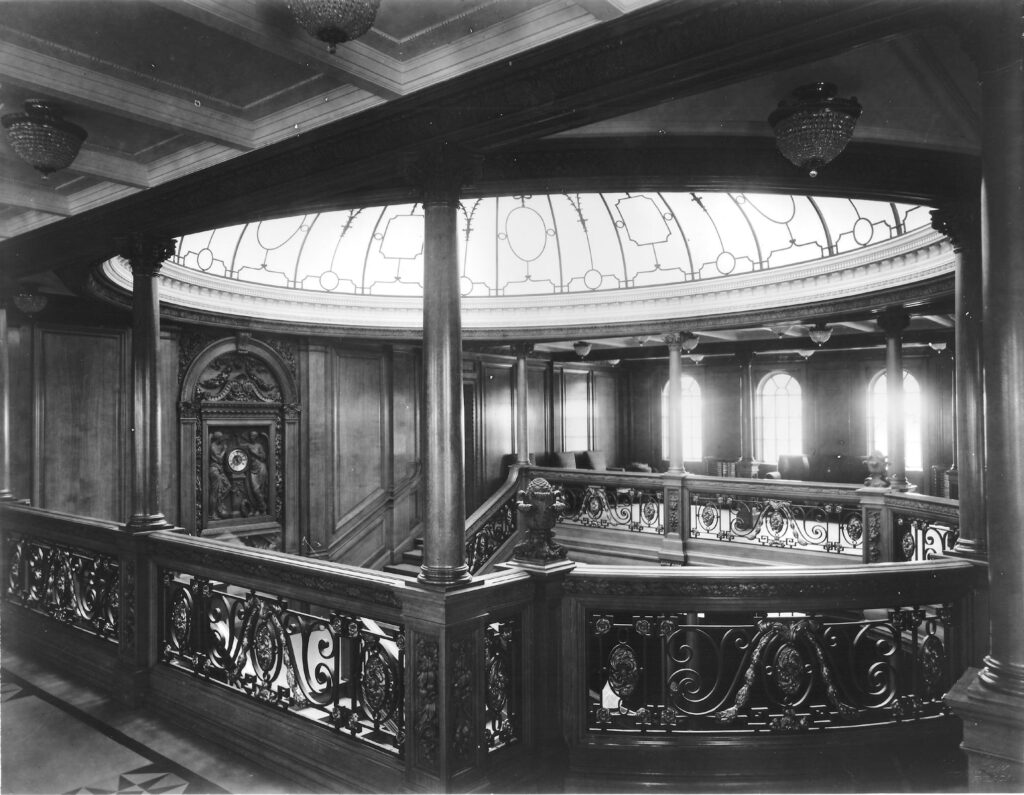Titanic Tours: The Grand Staircases

As time marched from the late-19th century to the dawn of the 20th, the ocean liners plying the North Atlantic had grown in both size and prestige. They had become far more than just a conveyance across the ocean. They were now places for the rich and famous to be seen. Areas of the ships that had previously been functional but only modestly decorated were now made into set pieces and backdrops for the moneyed of first class.
On the Olympic-class liners, this was perhaps nowhere more grandly evident than in the ships’ two grand staircases, one forward and one aft. These staircases were ornately carved and decorated in the William and Mary style along with balustrades with notes of Louis XIV. The forward staircase descended sweepingly from the boat deck, where passengers could look up and see the enormous glass dome decorated in intricate iron patterns, all the way down to the Saloon (D) deck, where the final sweeping landing was adorned at its center pedestal with a large electronic candelabra. Further, smaller staircases led down to the Upper (E) deck and finally terminated at the Middle (F) deck, allowing access to the Turkish Baths and swimming pool. The aft staircase was more abbreviated and slightly less grand, running between the Promenade (A) and Shelter (C) decks.
The pinnacle of the spaces’ grandeur could best-viewed from the A deck landing of the forward staircase. Passengers standing in this area were treated to a large cherub sculpted in bronze and holding aloft an illuminated torch.
At the half-landing between the Boat deck and A deck, the largely plain Irish oak wall paneling gave way to a fabulously-detailed carving centered around a clock. Two figures stood to either side of the clock, symbolizing “Honour and Glory crowning Time.” Pineapple finials adorned the newel posts, while the balustrades of the staircase were decorated with wrought iron scrollwork punctuated by bronze flowers and foliage.
The remaining half-landings of the forward staircase were decorated with oil paintings, and smaller lit cherubs would have adorned the outer newel posts on each deck’s landing. The aft staircase also had a clock on it’s first half-landing, but this was of a much less grand design. Behind the stairways forward was the bank of three elevators, which we will cover in a later tour.
Unfortunately, no photos have been discovered as yet that actually show Titanic’s staircases. We are left with several photographs of Olympic, which give an idea of how the space may have come to be modified had Titanic survived and had a similarly long career in service, and the concepts for Britannic’s upgraded staircases, which would’ve included a large pipe organ. Olympic’s staircase was modified over the years to replace brass strips along the front of the stair treads with rubber, to add handrails along the balustrades, and finally and most starkly by repainting the space a light green with gold accents late in the ship’s career to attempt to make the space feel more modern. Of these, the only alteration that may have been incorporated into Titanic during her only voyage is the rubber stripping on the treads, although there is no evidence one way or the other.

Today, the aft staircase is largely lost to history, its beautiful spaces having been mostly destroyed in the breakup as the great liner began her final plunge. The forward staircase is now a cavernous abyss with little evidence remaining of its former grandeur. The clock, perhaps the most famous adornment on the ship, is lost along with virtually all of the original ornate woodwork. Still, the staircase serves a useful purpose for explorers, who now use it to access decks and spaces deeper in the ship. Images from this area are as iconic in the realm of wreck photography as the original staircase was for passengers, with light fixtures hanging precariously from wires and columns showing tantalizing bits of their former glory.
Post By: Nick DeWitt
Photo Credits: Titanic Connections Archive

